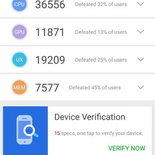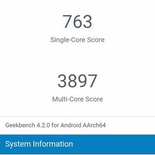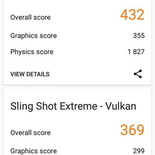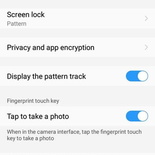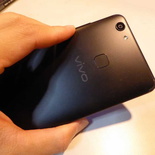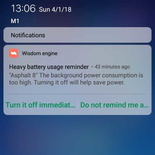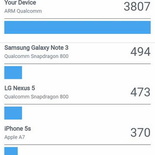Following my earlier review part on the Vivo V7+ exterior, build and software. This section carries on into other aspects of the phone. Lets take alook at the Vivo V7+ benchmarks, camera, battery performance and the eventual review conclusion.
Performance Tests
The V7+ hardware specifications are not quite something to brag about. The onboard entry-level CPU and 4GB RAM is far from high end specs offered on the market. This is also considering Qualcomm 600 to 800 Series CPUs and 6 to 8GB of RAM on phones being mainstream. On hindsight, 4GB of RAM is comparable to flagship models phones 2 years ago.
However, those phones can easily cost twice as much. Despite the V7+ specification shortcomings, surprisingly, the phone does an excellent job in handling any productivity task you throw at it, such as editing documents, emailing and messaging. Also, the Funtouch OS UI does a good job in minimizing taxing the hardware through running only the apps in-use.
When translating to real-world use, the phone is well optimized from a software perspective which makes use of available limited resources. Notably, despite its lower hardware specification, the phone performs well in my gaming performance tests. The V7+ plays mainstream games well without any hiccups.

Also, 3D games such as Asphalt and Mobile legends run well without any noticeable lag or drop in frames. 2D games such as Hearthstone perform well too. However, if you are a serious gamer, games should be not what you get the V7+ for. This is mainly let down by the sub-HD screen resolution.
When translating to real-world use, the phone is well optimized from a software perspective which makes use of available limited resources.
Benchmarks
Physical benchmarks is one area where you can really see the shortcomings of a slower entry-level processor. The phone managed an AnTuTu Benchmark score of 75213. This benchmark tests for acceleration that takes advantage of heterogeneous hardware on the Android platform. The score places the phone in the lower 22% percentile of benchmarks.
The V7+ achieved a less-than average single core score. It scored 763 in the single-core Geek Bench. This score is similar to the Samsung Galaxy S4. However, it does score well in the multi-core score, achieving 3897- comparable to the Google Pixel XL, Xiaomi Redmi Note 2 around the sub 4000 score. But is about 25% lower than a Samsung Galaxy Note 7 (with a score of 5228). On data-parallel computation, the phone benched 2958 in the Geek Bench RenderScript score, comparable to a Samsung Galaxy S7.

3D performance is below average with a 3D Mark Ice storm extreme score of 7879 and a Sling Shot Extreme score of 432 on OpenGL and 369 on Vulkan. Additionally, API Overhead test scored 47666 on OpenGL, and 202444 on Vulkan (4 times higher). Notably, throughout the benchmarks, the phone hovered around the 34-35°C with a useable FPS range of 28 to 103.
Excellent Heat Management and Temperatures
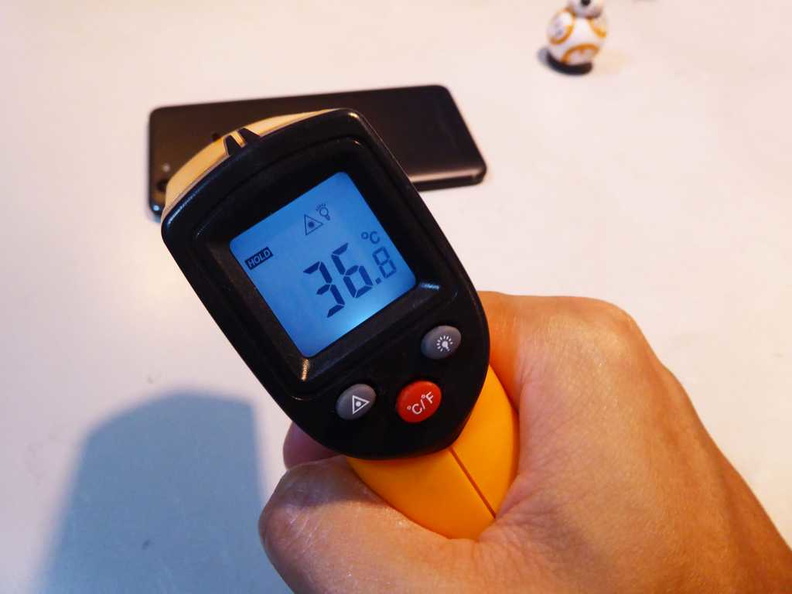
Commendably, heat was not an issue on the phone. The Snapdragon 450 does a good job in running well without getting too hot. In my stresses tests, the phone never got hotter beyond body temperature, hovering under the 37°C mark. Noticeably the CPU does not exceed over 80% load in my tests, it could be due to a conservative down clocking to keep the CPU running at efficiency operating point.
Good Camera Performance
Camera performance is good for the segment. The V7+ comes touts a conventional dual camera setup, with a single lens on each face. However, the unique selling proposition of the V7+ is its humongous “selfie-shooter” secondary front-facing 24 Megapixel (f/2.0, 23.8MP 5632×4224) camera.
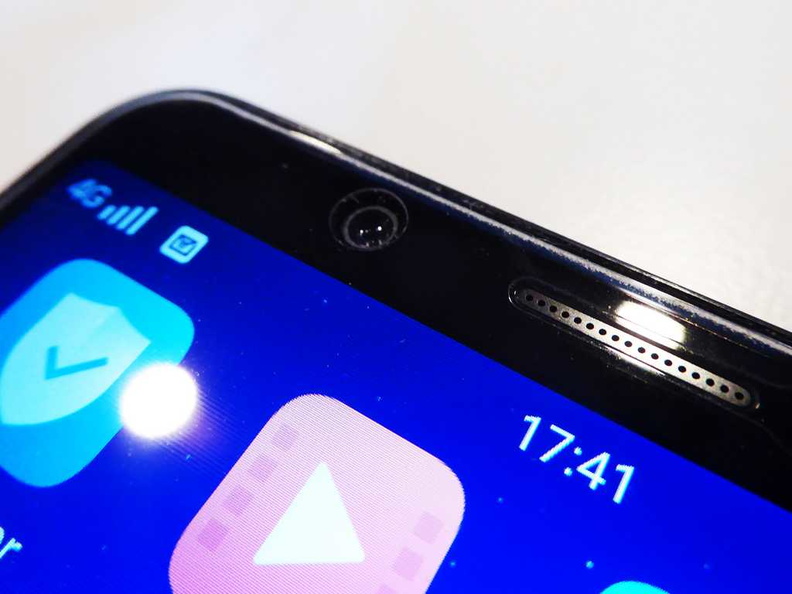
The front camera dwarfs its rear facing 16MP (f/2.2, 15.9MP 4608×3456, f/2.0, 1/3″, 1.0 µm) rear primary camera. The phone is capable of recording 1080p video at 30fps.
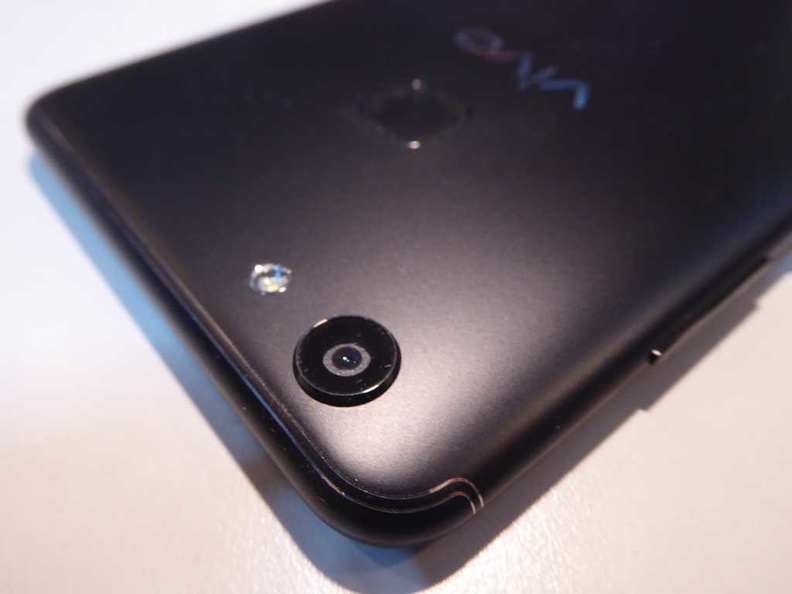
Additionally, the camera software comes with your usual bells and whistles such as photo geo-tagging, touch focus, panoramas, face detection and HDR. The camera capture interface is incredibly easy to use. It is lag-free, intuitive and easy to use out of the box. If you are coming from Apple’s books, you won’t feel lost.
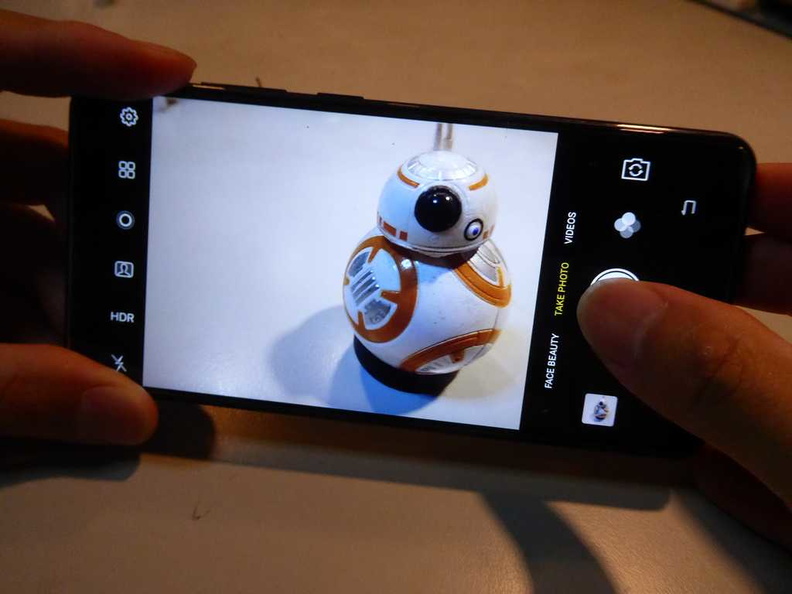
V7+ Photo Test Shots
In my camera test, the colour accuracy of outdoor photos are visually good and accurate. The default setting offers more of a slightly muted cold tone without appearing too rich or overly saturated.

The skies in day outdoor shots are not over-washed, especially in sunlight. The camera manages adequate contrast to capture details in the skies and clouds without underexposing dark parts of the foreground even without HDR mode activated. With HDR on, photos take twice as long to capture. Resulting pictures have richer darks and darker whites such as the ripples as seen on the water reflections.

Outdoor night shots are reasonably fair, but not great. There is noticeably more noise as well as a lower dynamic range for night shots. There are also noticeable higher chances of blurring. This is given a higher ISO, longer shutter speed as well as limitations of a small sensor able to take in so much light at once in low-light conditions.
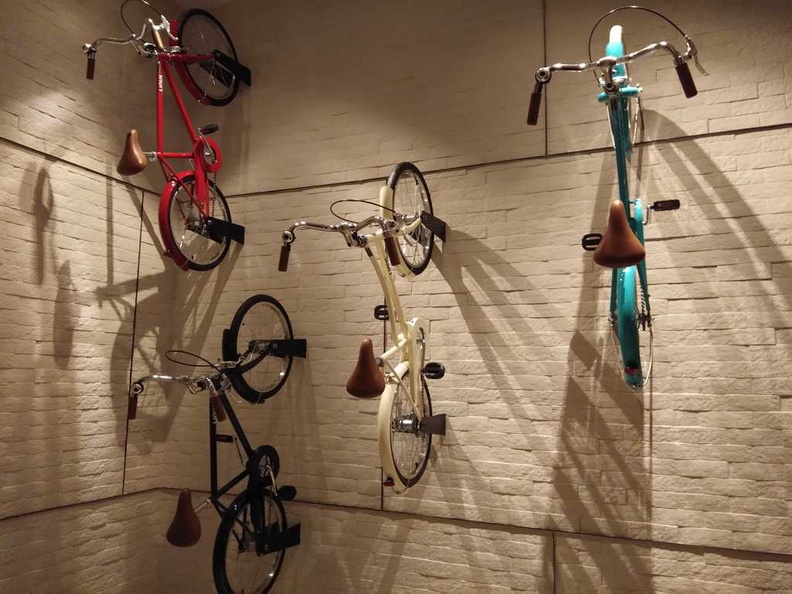
For indoor shots, the camera does a good job in filtering indoor lighting, such as fluorescent tints and automatically adjusts the colour modes correctly. There are adequate contrast as well as colour accuracy which makes this shooter very suitable for indoor use.
The camera handles macro shots well. Focus is achieved via tap-to-focus, though there is very limited depth of feel with a single lens. In selfie mode using the front 24MP camera, it enables a humorous “beauty mode“, or what I call the “K-mode” which automatically cleans up any blemishes on your subject’s face.
Excellent Security and unlocking options
The phone offers 4 modes of unlocking. Pin and Pattern unlock modes are your basic offerings with base Android phones. In addition, there are Fingerprint and Face unlock modes. The face unlock utilizes the phone’s front camera. You manage all your security settings, including deletion of fingerprint and facial recognition data all in the phone’s unified settings page.
A fingerprint sensor sits centered at the back of the phone by the phone’s rear logo. With the phone held in-hand. You can quickly unlock your phone from a cold standby (i.e. with the screen off) with a fingerprint swipe. Unlocking through fingerprint brings you right into your home screen or your last activity. Registering your fingerprint is a one-time setup and is rather painless. Also, you can also register more than one finger print if the phone is to be used between multiple users.
Lighting fast fingerprint unlock
The fingerprint sensor is one of my favorite methods of locking. Where you can simply take your phone one-handed out of your pocket, swipe the back and it will be ready for use as you bring your phone up. It can be pretty habitual after awhile and minimize the time needed to pause to enter an unlock code, etc.
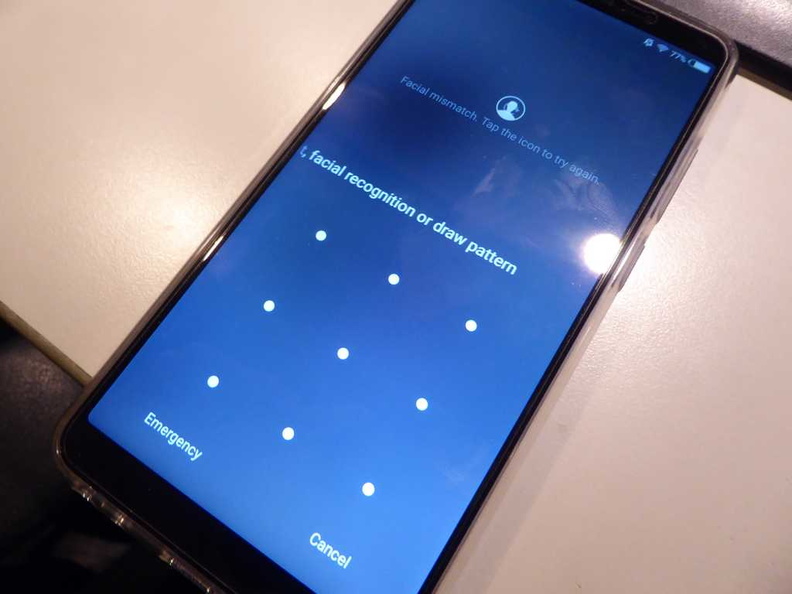
In addition, for face recognition, registration of your face is rather quick and painless too. It took less than a minute to setup. The front large camera does a good job in capturing your face in a variety of light conditions. Just make sure that lighting is adequate for the best facial registration.
Upon registration, the facial recognition is rather quick too. Double tapping the phone screen wakes it up, presenting an unlock screen. Staring into the front of the phone for 2 seconds will instantly unlock phone without any input. Similarly, the unlock brings you pass your unlock screen into your home screen/last used activity.
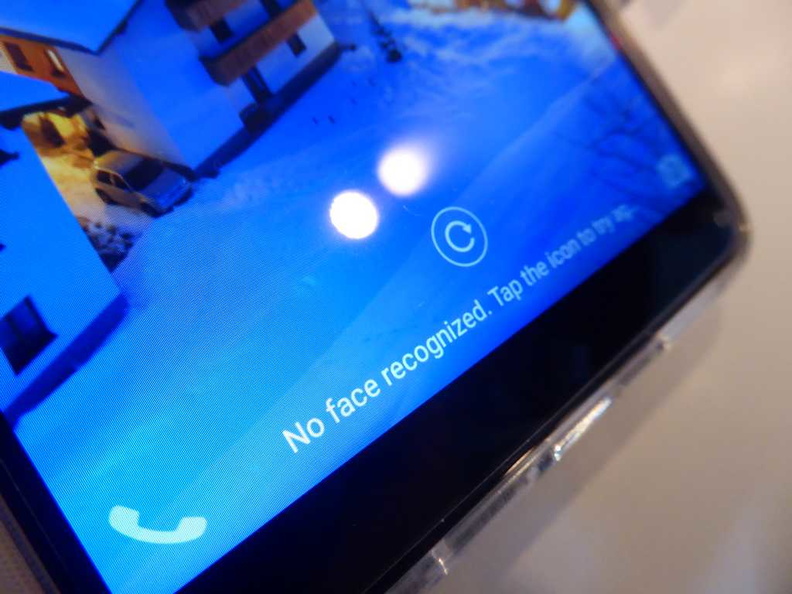
The face unlock is smart enough to fail unlocks from photos graphs and photos from another screen. If face unlock fail, you will be presented with alternative unlock methods, such pattern, pin or fingerprint.
Excellent Battery Life
One of the main selling points I find of the V7+ will have to be its fantastic battery life. Sealed inside the phone is a sizable non-removable Li-Ion battery sitting at 3225mAh. I managed to get easily 2 full days of use of daily moderate use on the phone. Test case mirrors a typical work day using the phone for productivity and entertainment on my work commutes.
Usage includes continuous 4G standby with mixed Wi-Fi use, 1-2 hour of internet browsing and social media and 2-3 hours of music daily. Apps used includes communication, such as about 30 minute of phone calls a day, WhatsApp and social media.
Unexpectedly useful Vivo Wisdom Engine
One of the largely unnoticed software innovations by Vivo is what they call the Wisdom engine. It sounded really gimmicky as first. Almost like their quirky dual split-screen feature (similar to Samsung’s Multi Window) which never quite worked for me due to a large number of unsupported apps incompatible with the dual screen feature.
In a nutshell, the Wisdom engines is a passive background monitor app running on Vivo’s FunTouch OS. It notifies you on any abnormality’s your phone encounters out of the ordinary, such background apps with high battery usage to prolong battery life.
And I say it does a pretty good job at it. Surprisingly, with enough effort, you could push the V7+ battery to last 3 days of regular use. I ended up having to charge at the end of the third day before the battery became totally depleted. Noteworthily, in the pursuit of feature innovation, most phone manufactures these days often cramp in more power-hungry features at the expense of battery life.
Battery Benchmarks
On continuous usage drain tests with the screen on at 50% brightness, the phone managed a respectable 9 hours and 42 minutes of battery life before being depleted. Despite not supporting wireless charging, the phone supports fast charging via a single Micro-USB port. It takes about 3 hours to fully charge from 5% up to 100%.
Moreover, the V7+ sub-3000 mAh battery capacity is comparable to that of the current Samsung Note 8. However, the V7+ runs circles around the Note 8 in the battery department, up to 2 times at least. This impressive battery score puts it top in its class, and just behind the sub-4000mAh heavy-weights, such as the Redmi Note 4 and Oppo F3 Plus.
Furthermore, the phone also spots an impressive Geekbench Battery performance score of 3807. The Vivo V7+ is a good example where the benefits of a lower sub-HD screen, coupled with a low powered CPU where you can truly see the benefits of a lower specification for a less power-hungry device. For the average consumer, it will fit in nicely for you if you demand a simple no-frills phone which can easily last you over a day in battery life with more to spare.
Last impressions and Conclusion
All in all, though the V7+ might not spot the latest specifications and probably not the poster boy of you would call “industry-leading“. However, the V7+ does punches well over its weight in terms of the features to offer for its price and market segment. This is especially so if you manage your expectations and just need a phone which is very usable and works well, minus all the bells, whistles and price of current flagships.
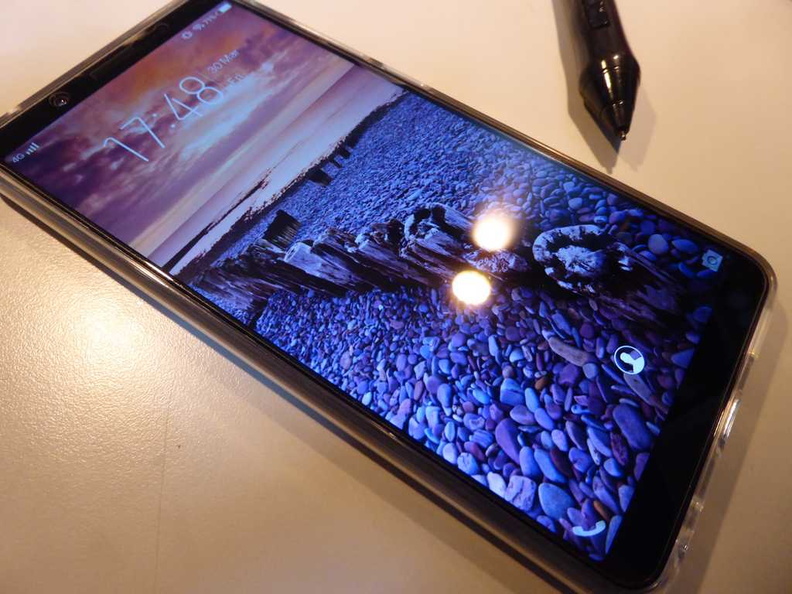
Perks such as the presence of a fast extinct 3.5mm headphone jack is a plus point, together with removable storage and a decent punchy CPU providing adequate gaming performance puts the V7+ in a very neat package which makes up for its shortcomings. For example, while the phone could do better with a full HD screen, the lowered power consumption in return, gave it excellent class-leading battery life I simple adore.
The entry to mid-range phone market is one often under looked. In comparison, it is worth noting in the light of the iPhone X, Galaxy S9 and Huawei P20 taking battle on the high-end market, these current flagships can easily costs 3 times more than the V7+ $469 SGD asking retail price (with one year local warranty). You might not be getting as much more phone for your dollar. The Vivo V7+ stands out as one of the few gems in this market segment. Value for money you might say, without the cost.
Hence, if you are in the market for an entry to mid-range phone such as Huawei P10 Lite, Xiaomi Redmi Note 4 or OnePlus 3. The V7+ is definitely a good refreshing contender to consider in the lineup.
It might actually be a phone I would buy.
Good- 72%
Pros:
- Excellent battery life
- Runs very cool at load
- Fast fingerprint and face unlock
- Capable front and rear camera
- Well priced
Cons
- Sub-HD screen
- Minimal performance headroom
- Sketchy Bluetooth performance
- No NFC
- No wireless charging

